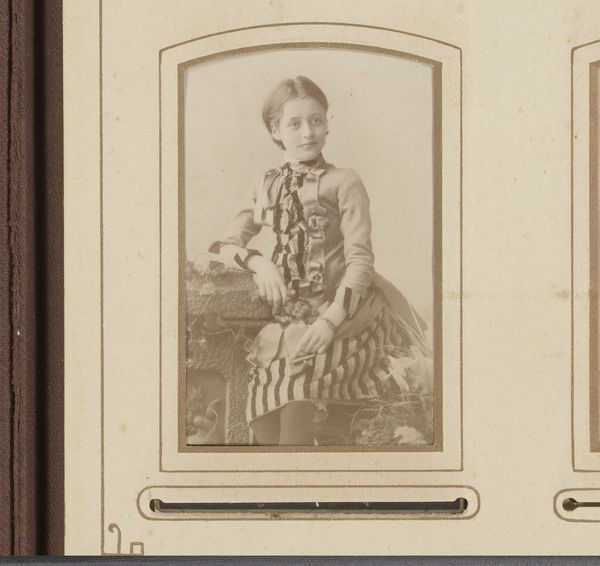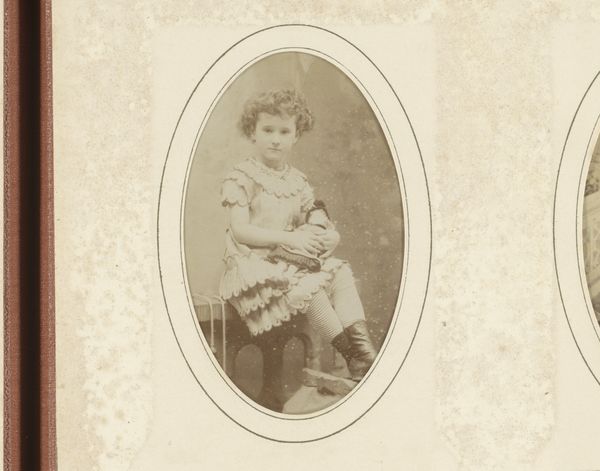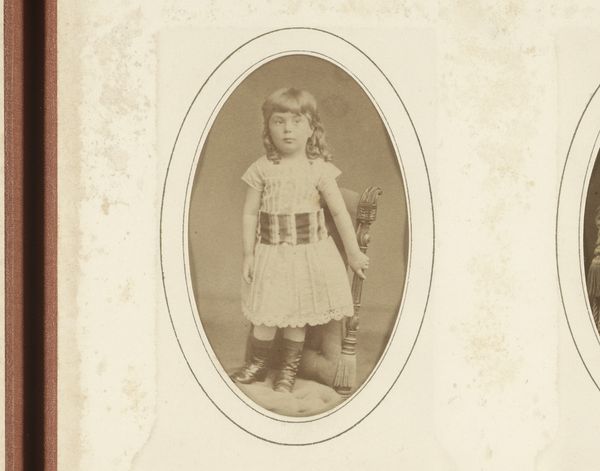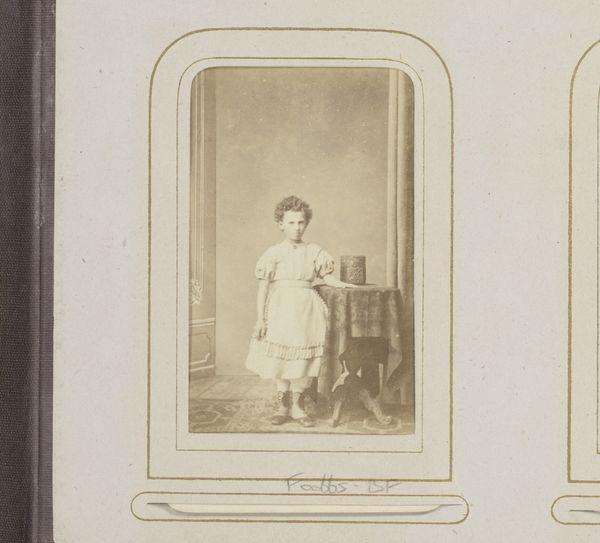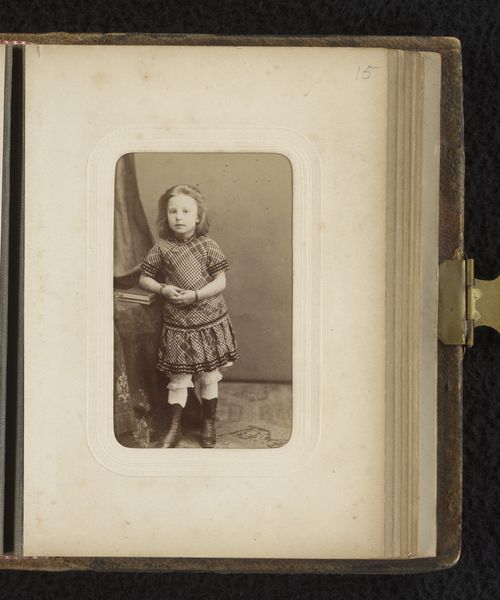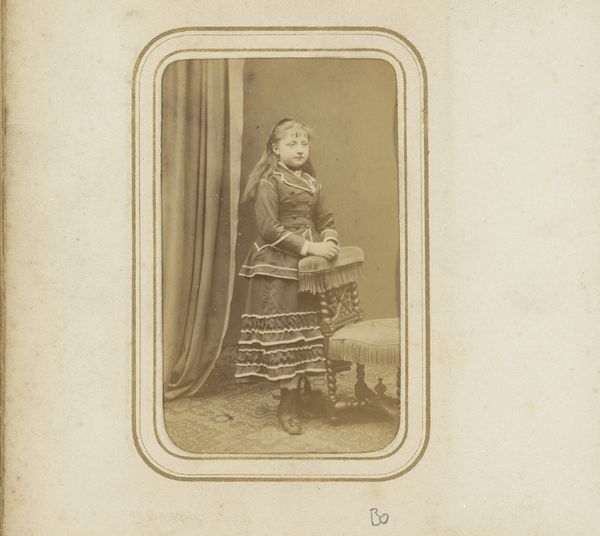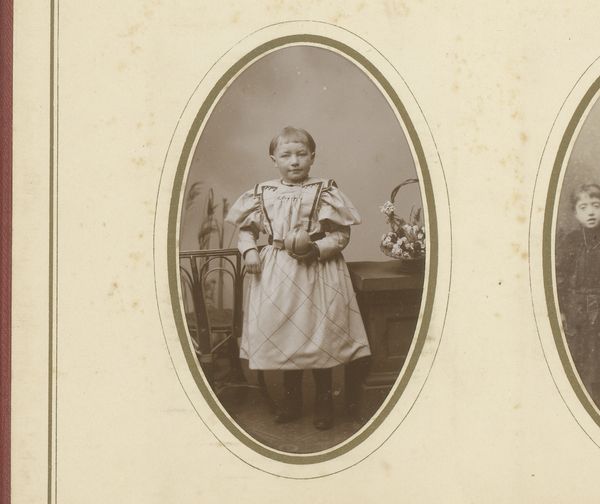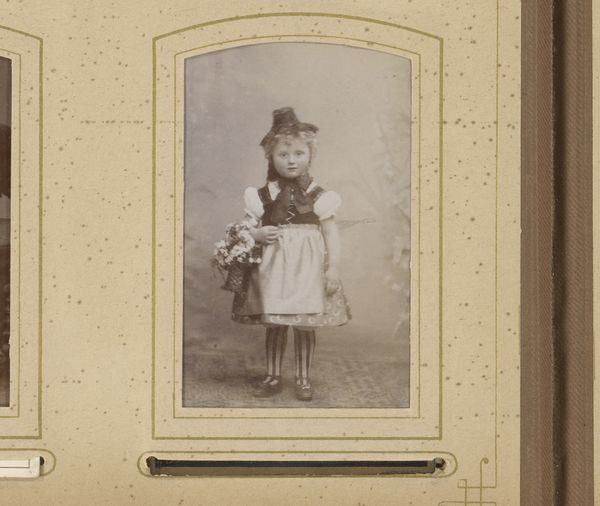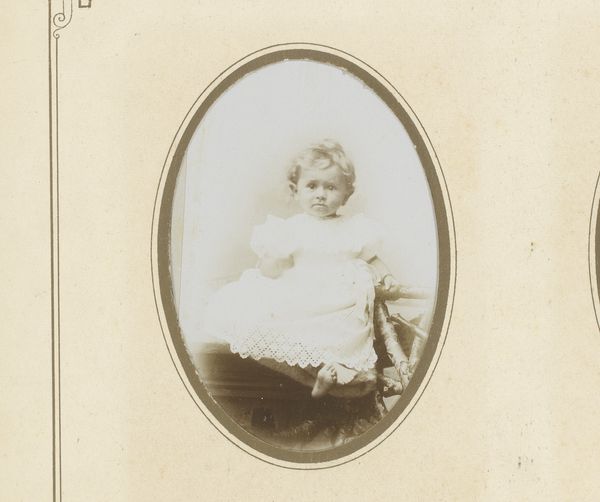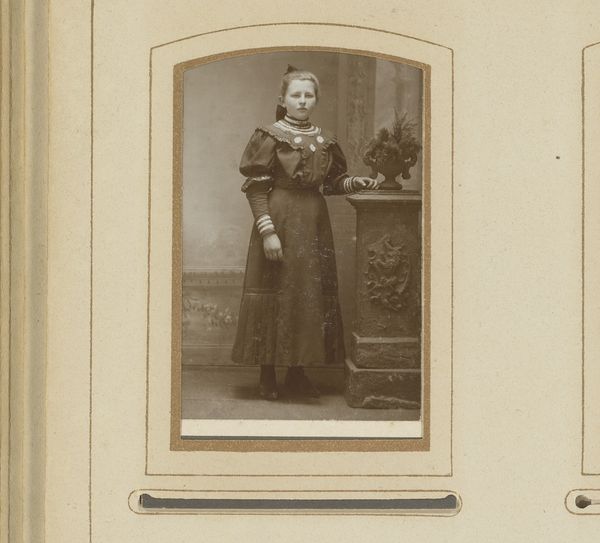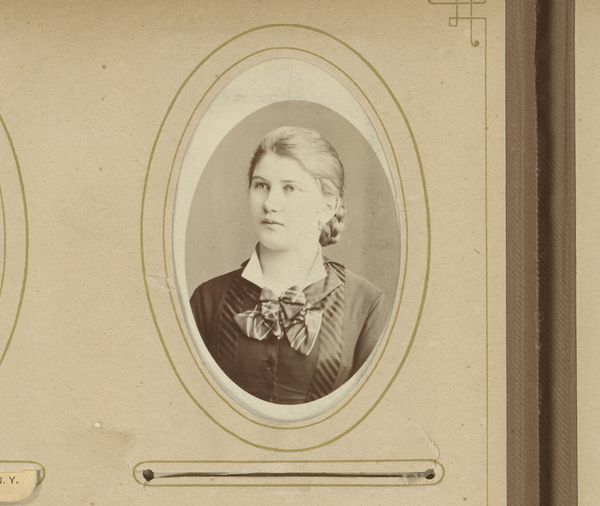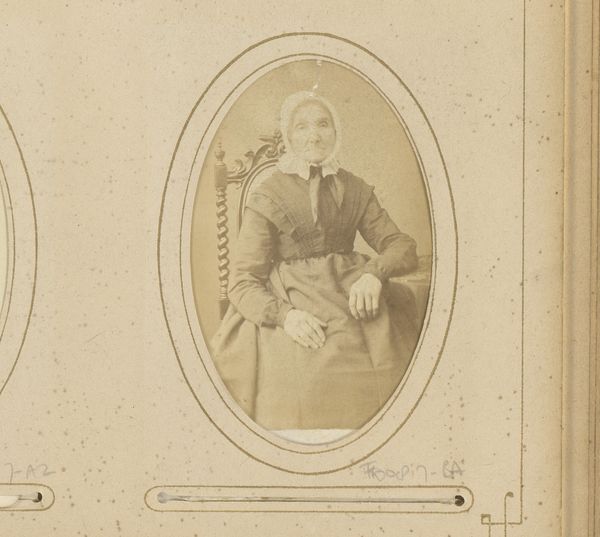
print, photography
#
portrait
# print
#
photography
Dimensions: height 82 mm, width 51 mm
Copyright: Rijks Museum: Open Domain
Curator: Take a look at "Portret van een staand meisje", or "Portrait of a Standing Girl". We estimate it to have been created sometime between 1860 and 1900 by Oswald Lonke, probably a local photographer. It’s a photo, likely printed soon after it was taken, framed as an oval on a card, quite typical of the period. What strikes you most? Editor: The slightly off-center framing and her hand resting gently against the unseen wall create an incredible sense of intimacy. The light is muted, but the girl's expression seems unguarded and quite modern, actually. Curator: Absolutely. These cabinet cards were becoming popular as a burgeoning middle class sought ways to emulate the gentry and preserve family memories. Photography democratized portraiture to an extent, becoming a commonplace activity and a popular business in European cities and towns. Editor: Her dress, that checkered pattern against the simple white blouse... it feels carefully chosen to reflect a specific idea of girlhood and respectability. Those crossed patterns resonate with the desire for order, typical of that era. Curator: It’s a potent reminder of the era’s increasing fascination with cataloging and categorizing. You see the influence of scientific documentation even in personal portraits, this desire to classify everything—and people, to some extent—in society. The girl is framed—quite literally—within the confines of social expectation. Editor: Yes, and that oval further emphasizes this encapsulation! The sepia tone lends a feeling of nostalgia but also of restraint, a time capsule of a controlled era. Curator: Photography studios thrived catering to that desire for controlled public image, so she has very likely been directed how to pose, stand and where to look. Yet there remains something about her pose that conveys more life than those standardized and static portraits we know so well. Editor: It makes you think of the countless similar portraits, carefully posed children peering out across time. A potent reminder of fleeting youth! Curator: Precisely. It invites reflections on the evolution of representation, class, memory and the history of photography. Editor: Well, for me, this evokes not only a particular moment but speaks to the universal experience of growing up, filtered through the specific lens of Victorian social expectations.
Comments
No comments
Be the first to comment and join the conversation on the ultimate creative platform.
